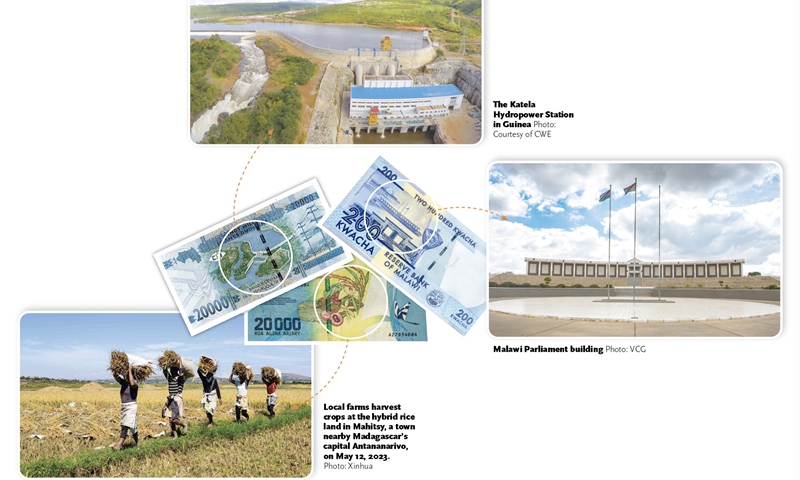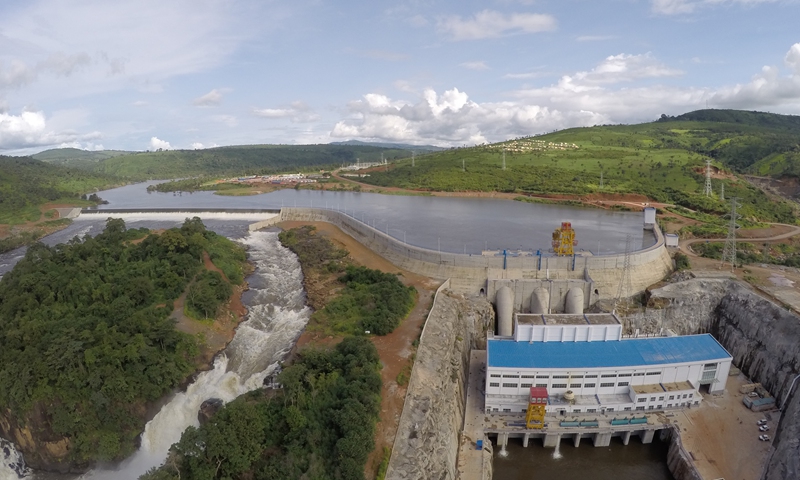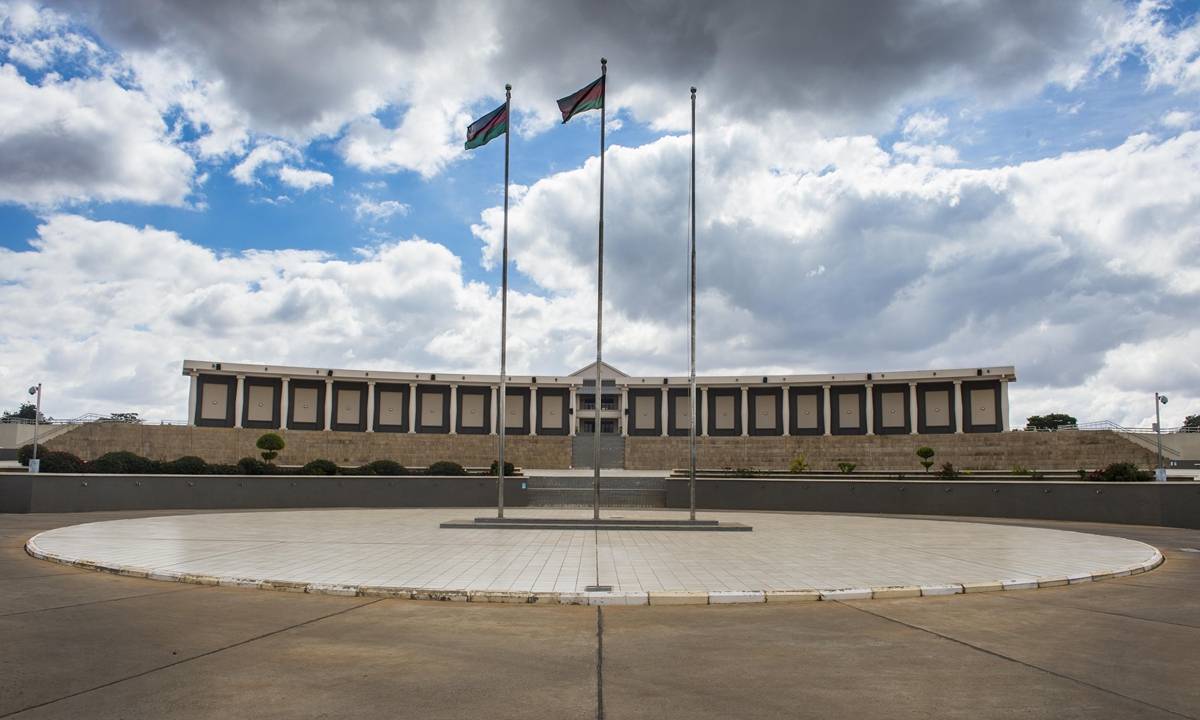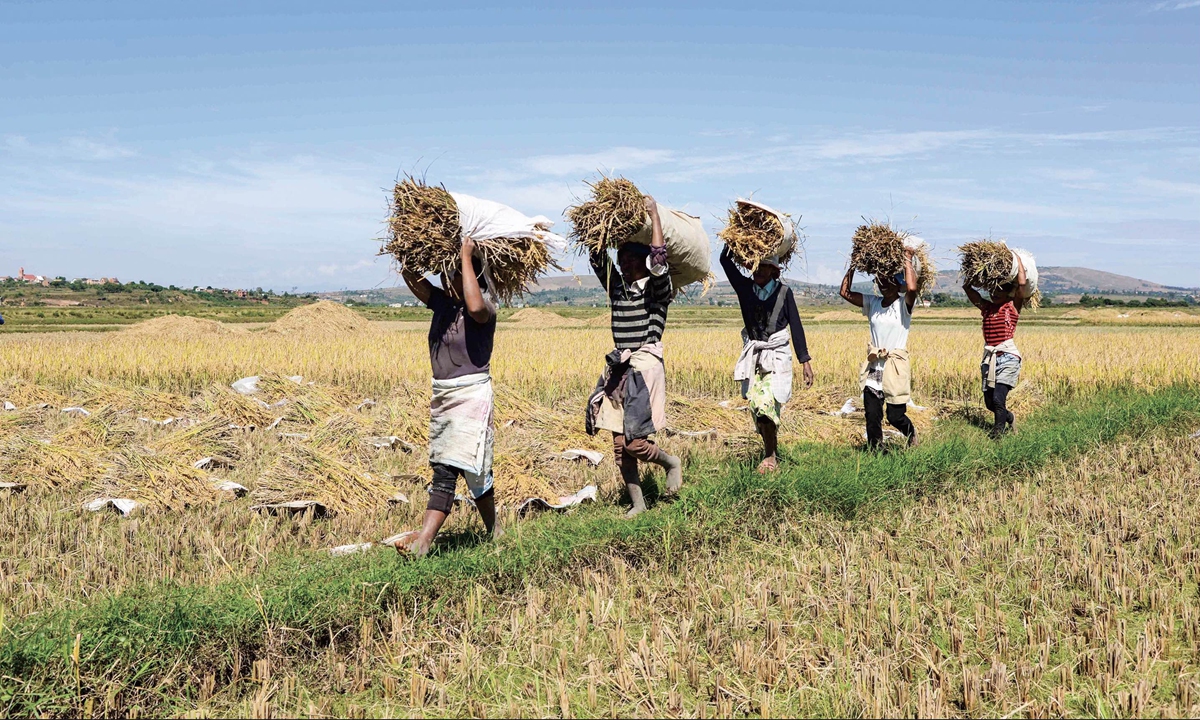
Banknotes witness friendship
In many African countries, the designs on their currency showcase the historical, cultural and social development achievements of the nation. From rice paddies to hydroelectric plants, from bridges to skyscrapers, several iconic achievements of China-Africa cooperation are imprinted on the currencies of these African countries, circulating in the daily lives of the local people.
Lighting up homes

The Katela Hydropower Station in Guinea Photo: Courtesy of CWE
The Kaleta Hydropower Station, built by China International Water and Electric Corporation (CWE), is a landmark project in Guinea. With the project costing $446 million and a total installed capacity of 240 megawatts, the project started in 2012 and was officially connected to the grid in 2015, Xinhua News Agency reported on Monday.
The power station has greatly alleviated the power shortage in the capital city of Conakry and surrounding areas, promoting economic development and bringing tangible benefits to the local people, according to Xinhua.
Expressing gratitude to China, the Central Bank of Republic of Guinea imprinted the image of the Kaleta Hydropower Station on the country's 20,000 Guinean Francs banknote.
Grandeur on display

Malawi Parliament building Photo: VCG
On the 200 Kwacha banknote of Malawi in Southeast Africa, there is an image of the magnificent Malawi Parliament building. The Parliament building, built with Chinese assistance, is one of the major projects of China-Malawi cooperation after the two countries officially established diplomatic relations in 2007, Xinhua News Agency reported on Monday.
The building, with a total construction area of 26,000 square meters, was completed in just 15 months. This project has become a landmark building in the capital city of Lilongwe, Malawi.
Over the years, cooperation between China and Malawi in various fields such as infrastructure and agriculture has greatly improved the urban appearance and the lives of the people of Malawi.
Rice fragrance wafts across ocean

Local farms harvest crops at the hybrid rice land in Mahitsy, a town nearby Madagascar's capital Antananarivo, on May 12, 2023. Photo: Xinhua
In 2022, the Ambassador of Madagascar to China, Jean Louis Robinson, presented a special gift to the Longping Rice Museum in Changsha, Central China's Hunan Province - a set of Malagasy banknotes. What makes it special is that the 20,000 Ariary banknote features the image of Chinese hybrid rice.
In 2017, officials from the agricultural sector of Madagascar also visited Changsha to present a similar banknote to Yuan Longping, the late academician known as the "father of hybrid rice," expressing their gratitude to Chinese rice experts.
Rice is the main crop in Madagascar, occupying more than half of the country's agricultural land. However, due to various factors such as seed quality, planting techniques and infrastructure, rice production has never been able to meet the food needs of the country, which still relies on imports.
To help Madagascar achieve food self-sufficiency, Chinese experts have been working locally since 2007, promoting suitable hybrid rice varieties, training local agricultural technicians and rice growers and helping the country improve soil structure, Xinhua reported.
Hu Yuefang, an expert from the Hunan Academy of Agricultural Sciences, said that hybrid rice varieties developed with new Chinese technology have an average yield two to three times higher than local African varieties.
By December 2022, Chinese hybrid rice has been promoted on 75,000 hectares in Madagascar, with an average yield of about 7.5 tons per hectare, taking a big step toward achieving food self-sufficiency locally.







